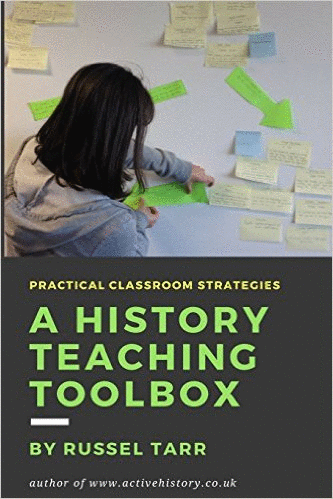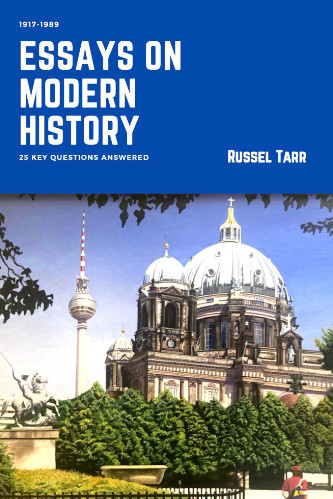Transform your history classroom
ActiveHistory provides educational, award-winning interactive simulations, decision-making games, self-marking quizzes, high-quality worksheets and detailed lesson plans for the school history classroom. All resources have been designed by full-time history teacher Russel Tarr.
An ActiveHistory subscription provides everything you need to construct and deliver a History course from start to finish for the entire 11-18 age range!
These consist not just of lesson plans, worksheets and teacher notes, but also multimedia lectures and interactive games and historical simulations ideal for remote learning and self-study.
World History teaching resources for the high school classroom: lesson plans, worksheets, quizzes and simulation games for KS3, IGCSE, IB and A-Level teachers.
Why was religion so important to people in the Middle Ages?
In this self-contained unit of study, students are encouraged to see the Church in Medieval terms as a centrure of the community and to see heaven and hell as "real" places which provided medieval people with a framework for life. This helps them to appreciate the importance of the clash between the Crown and Church in the reign of Henry II.
Each of the following three key questions can be approached as separate 'mini-topics' at different points of the year (which is how I approach it myself).
A. Was the Medieval Church loved, or feared?
Why was the Church so important in the Middle Ages?
All to often, students can't quite grasp why the church was so important to medieval people. This lesson is designed to address that issue and engage their interest in the topic through means of a 'timewipe' exercise on the board. There are some samples of student work available from this activity.
What is hell like?
Image sources to share with the class | Prezi of Images
"In this task we will investigate what Medieval people thought Hell was like. In other words, the Church's power was based on FEAR as well as LOVE. The exact balance between these two things is for you to decide later! Your job is to imagine that you are a priest in the Middle Ages. You will produce your own terrifying Medieval sermon warning people about the dangers of hell. To prepare for this, you will be placed into groups. One person from each group should collect a picture from the set of images held by the teacher. They will then answer the four questions in the table overleaf from the rest of the team without showing them the picture. When the discussion is finished and everyone has taken notes, a second person in the team should bring the picture back and get a fresh one. This process will be repeated for as long as the teacher gives you on the activity."

The lesson could begin, or end, with the following short video as a starter or a plenary resource:
What sorts of things could get me into hell? - The Seven Deadly Sins [student worksheet version] OR
What sorts of things could get me into hell? - The Seven Deadly Sins [teacher-led presentation version]
In this activity students will learn about, and connect, the seven deadly sins. They will also learn about which particular punishments are associated with each of these sins. They will then write a dialogue between two people that can be acted out in front of the class:
a. "The Sinner": You will be going into the Confession Box to tell the Priest all about your sins. You must imagine that you have committed every single one of the deadly sins. You must write a story about yourself in which you will explain to the priest how you committed each of the seven deadly sins. Try to connect these up in a believable story using your answer to question (2) to help you.
b. "The Priest": You will be warning "The Sinner" of the terrible fate that awaits them in hell if they continue sinning in this way. Use the information in the table above, and the work you did in the previous lesson about hell, to help you write this response.
The following dialogue was constructed between one of my American students and myself. We decided to make it a proper fire-and-brimstone affair.
So am I on a Highway to Hell or a Stairway to Heaven?! [Interactive]
In this interactive exercise, students answer a series of questions about their beliefs, hobbies and interests; a Medieval priest (Flatulence O' Flaherty) then tells them what "sins" they are guilty of and - based on their asnwers - what the best way is for them to gain God's forgiveness (e.g. Pilgrim, Monk, Crusader). This activity teaches students about the beliefs and then the practices of the medieval church and comes complete with a worksheet.
End of Unit Project
"Your task is to produce an investigation into the question "Why were people in the Middle Ages so religious?" The opening sentence of each section of your project is provided below. It is up to you how much detail to put in each section. Marks will be awarded for detail, presentation, illustrations and evidence of further research. You may wish to include a cover page as well. The best students will use their classroom notes as a starting point, but will try to find fresh evidence for themselves".
Revision / Consolidation KeyWord Challenge: Medieval Religion [Interactive]
If you are unfamiliar with the format of the game, click here for instructions.
Revision / End of Unit Quizzes

© 1998-2025 Russel Tarr, ActiveHistory.co.uk Limited (Reg. 6111680)
1 Torrin Drive, Shrewsbury, Shropshire, SY3 6AW, England
Privacy Policy | Contact






